‘Direct Collapse’ Black Holes May Explain Our Universe’s Mysterious Quasars
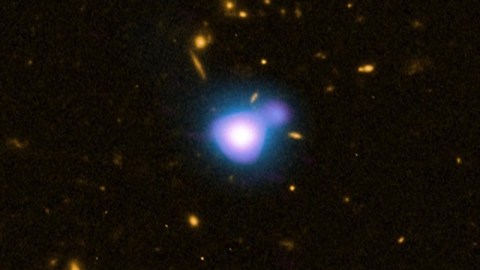
How did black holes get so supermassive so fast? Astrophysics may be about to find out, thanks to three big 2017 discoveries.
There’s a big problem when we look at the brightest, most energetic objects we can see in the early stages of the Universe. Shortly after the first stars and galaxies form, we find the first quasars: extremely luminous sources of radiation that span the electromagnetic spectrum, from radio up through the X-ray. Only a supermassive black hole could possibly serve as the engine for one of these cosmic behemoths, and the study of active objects like quasars, blazars, and AGNs all support this idea. But there’s a problem: it may not be possible to make a black hole so large, so quickly, to explain these young quasars that we see. Unless, that is, there’s a new way to make black holes beyond what we previously thought. This year, we found the first evidence for a direct collapse black hole, and it may lead to the solution we’ve sought for so long.
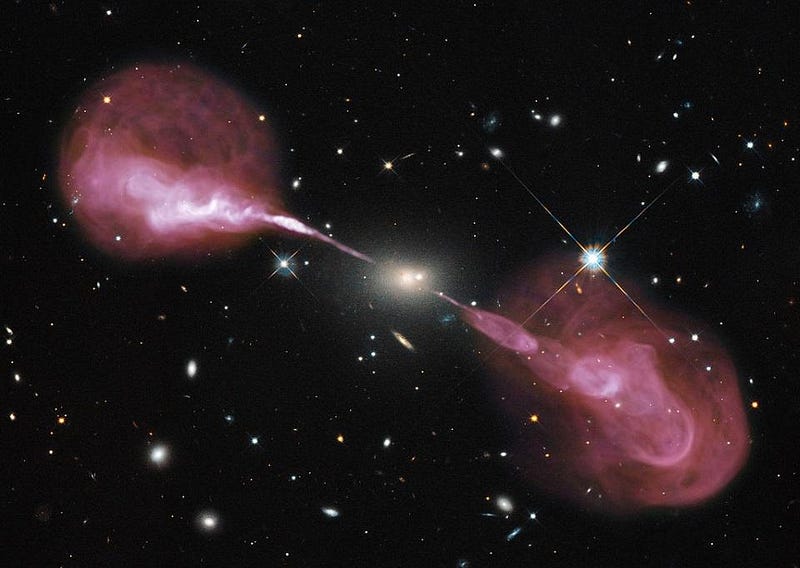
Generically known as ‘active galaxies,’ almost all galaxies posses supermassive black holes at their center, but only a few emit the intense radiation associated with quasars or AGNs. The leading idea is that supermassive black holes will feed on matter, accelerating and heating it, which causes it to ionize and give off light. Based on the light we observe, we can successfully infer the mass of the central black hole, which often reaches billions of times the mass of our Sun. Even for the earliest quasars, such as J1342+0928, we can get up to a mass of 800 million solar masses just 690 million years after the Big Bang: when the Universe was just 5% of its current age.

If you try to build a black hole in the conventional way, by having massive stars go supernova, form small black holes, and have them merge together, you run into problems. Star formation is a violent process, as when nuclear fusion ignites, the intense radiation burns off the remaining gas that would otherwise go into forming progressively more and more massive stars. From nearby star-forming regions to the most distant ones we’ve ever observed, this same process seems to be in place, preventing stars (and, hence, black holes) beyond a certain mass from ever forming.
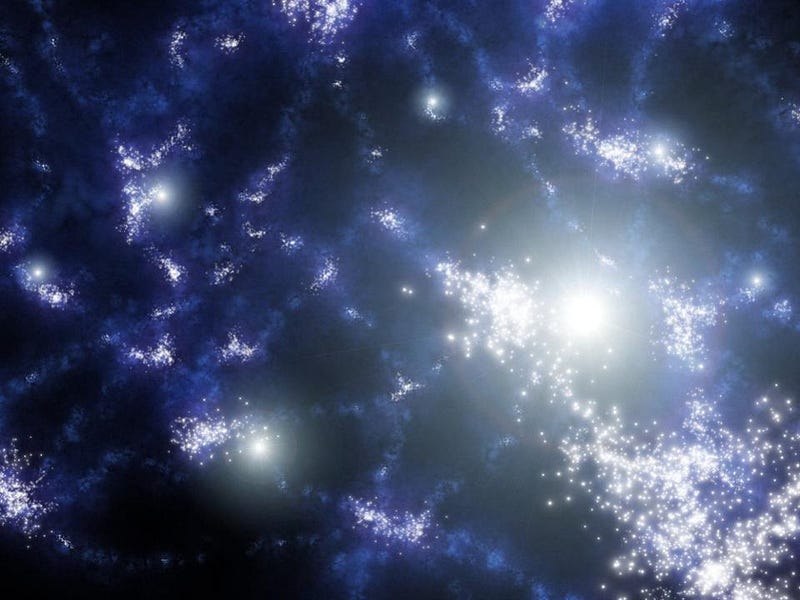
We have a standard scenario that’s very powerful and compelling: of supernova explosions, gravitational interactions, and then growth by mergers and accretion. But the early quasars we see are too massive too quickly to be explained by this. Our other known pathway to create black holes, from merging neutron stars, provides no further help. Instead, a third scenario of direct collapse may be responsible. This idea has been helped along by three pieces of evidence in the past year:
- The discovery of ultra-young quasars like J1342+0928, in possession of black holes many hundred of millions of solar masses.
- Theoretical advances that show how, if the direct collapse scenario is true, we could form early “seed” black holes a thousand times as massive as the ones formed by supernova.
- And the discovery of the first stars that become black holes via direct collapse, validating the process.
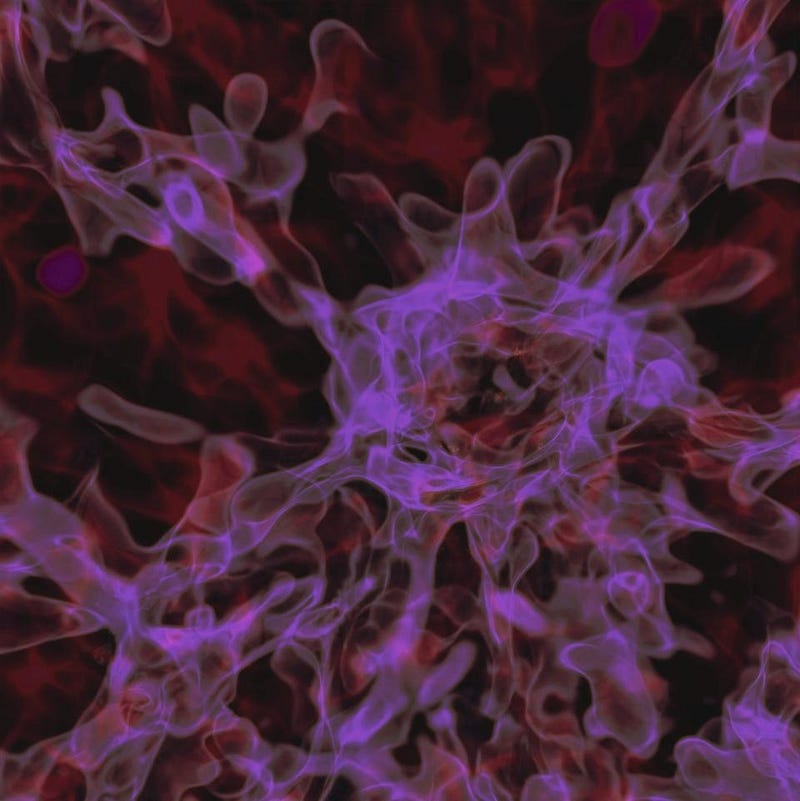
Normally, it’s the hottest, youngest, most massive, and newest stars in the Universe that will lead to a black hole. There are plenty of galaxies like this in the early stages of the Universe, but there are also plenty of proto-galaxies that are all gas, dust, and dark matter, with no stars in them yet. Out in the great cosmic abyss, we’ve even found an example of a pair of galaxies just like this: where one has furiously formed stars and the other one may not have formed any yet. The ultra-distant galaxy, known as CR7, has a massive population of young stars, and a nearby patch of light-emitting gas that may not have yet formed a single star in it.

In a theoretical study published in March of this year, a fascinating mechanism for producing direct collapse black holes from a mechanism like this was introduced. A young, luminous galaxy could irradiate a nearby partner, which prevents the gas within it from fragmenting to form tiny clumps. Normally, it’s the tiny clumps that collapse into individual stars, but if you fail to form those clumps, you instead can just get a monolithic collapse of a huge amount of gas into a single bound structure. Gravitation then does its thing, and your net result could be a black hole over 100,000 times as massive as our Sun, perhaps even all the way up to 1,000,000 solar masses.
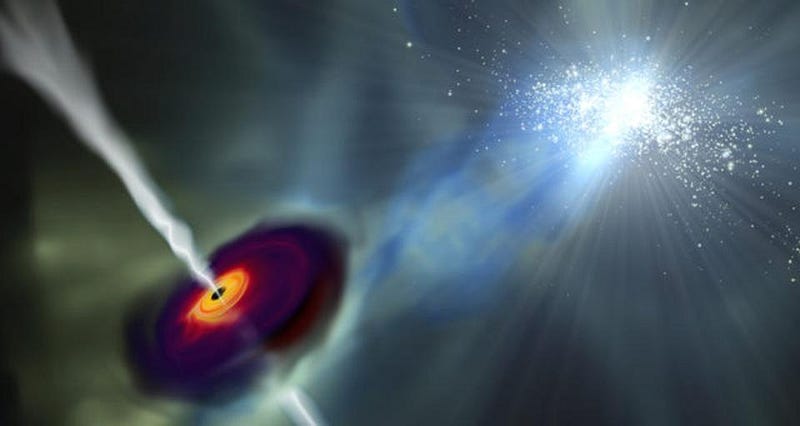
There are many theoretical mechanisms that turn out to be intriguing, however, that aren’t borne out when it comes to real, physical environments. Is direct collapse possible? We can now definitively answer that question with a “yes,” as the first star that was massive enough to go supernova was seen to simply wink out of existence. No fireworks; no explosion; no increase in luminosity. Just a star that was there one moment, and replaces with a black hole the next. As spotted before-and-after with Hubble, there is no doubt that the direct collapse of matter to a black hole occurs in our Universe.
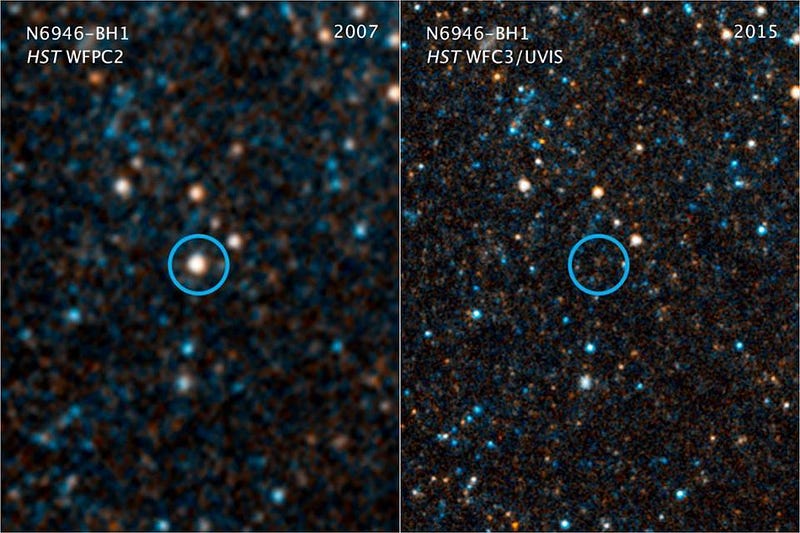
Put all three of these pieces of information together, and you arrive at the following picture for how these supermassive black holes form so early.
- A region of space collapses to form stars, while a nearby region of space has also undergone gravitational collapse but hasn’t formed stars yet.
- The region with stars emits an intense amount of radiation, where the photon pressure keeps the gas in the other cloud from fragmenting into potential stars.
- The cloud itself continues to collapse, doing so in a monolithic fashion. It expels energy (radiation) as it does so, but without any stars inside.
- When a critical threshold is crossed, that huge amount of mass, perhaps hundreds of thousands or even millions of times the mass of our Sun, directly collapses to form a black hole.
- From this massive, early seed, it’s easy to get supermassive black holes simply by the physics of gravitation, merger, accretion, and time.
It might not only be possible, but with the new array of radio telescopes coming online, as well as the James Webb Space Telescope, we may be able to witness the process in action.

The galaxy CR7 is likely one example of many similar objects likely to be out there. As Volker Bromm, the theorist behind the direct collapse mechanism first said, a nearby, luminous galaxy could cause a nearby cloud of gas to directly collapse. All you need to do is begin with a
“primordial cloud of hydrogen and helium, suffused in a sea of ultraviolet radiation. You crunch this cloud in the gravitational field of a dark-matter halo. Normally, the cloud would be able to cool, and fragment to form stars. However, the ultraviolet photons keep the gas hot, thus suppressing any star formation. These are the desired, near-miraculous conditions: collapse without fragmentation! As the gas gets more and more compact, eventually you have the conditions for a massive black hole.”
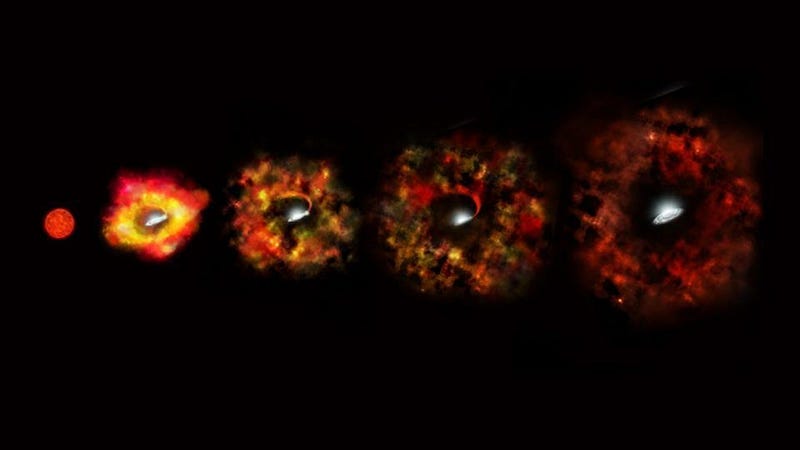
With a little luck, by time 2020 rolls around, this is one longstanding mystery that might finally be solved.
Ethan Siegel is the author of Beyond the Galaxy and Treknology. You can pre-order his third book, currently in development: the Encyclopaedia Cosmologica.





